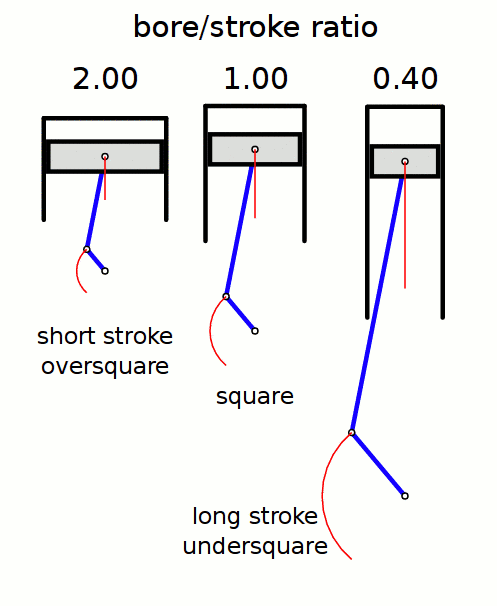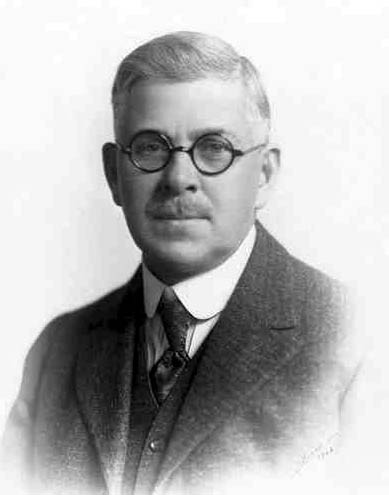|
Oldsmobile V8 Engine
The Oldsmobile V8, also referred to as the Rocket, is a series of engines that was produced by Oldsmobile from 1949 until 1990. The Rocket, along with the 1949 Cadillac V8, were the first post-war OHV crossflow cylinder head V8 engines produced by General Motors. Like all other GM divisions, Olds continued building its own V8 engine family for decades, adopting the corporate Chevrolet 350 small-block and Cadillac Northstar engine only in the 1990s. All Oldsmobile V8s were assembled at plants in Lansing, Michigan while the engine block and cylinder heads were cast at Saginaw Metal Casting Operations. All Oldsmobile V8s use a 90° bank angle, and most share a common stroke dimension: for early Rockets, for later Generation 1 engines, and for Generation 2 starting in 1964. The , , , and engines are commonly called small-blocks.''Hot Rod'', 3/86, p.54. , , and V8s have a higher deck height ( ''versus'' ) to accommodate a stroke crank to increase displacement. These talle ... [...More Info...] [...Related Items...] OR: [Wikipedia] [Google] [Baidu] [Amazon] |
GM Small-Block Engine
The General Motors LS-based small-block engines are a family of V8 and offshoot V6 engines designed and manufactured by the American automotive company General Motors. Introduced in 1997, the family is a continuation of the earlier first- and second-generation Chevrolet small-block engine, of which over 100 million have been produced altogether and is also considered one of the most popular V8 engines ever. The LS family spans the third, fourth, and fifth generations of the small-block engines, with a sixth generation expected to enter production soon. Various small-block V8s were and still are available as crate engines. The "LS" nomenclature originally came from the Regular Production Option (RPO) code LS1, assigned to the first engine in the Gen III engine series. The LS nickname has since been used to refer generally to all Gen III and IV engines, but that practice can be misleading, since not all engine RPO codes in those generations begin with LS. Likewise, although ... [...More Info...] [...Related Items...] OR: [Wikipedia] [Google] [Baidu] [Amazon] |
Intake Manifold
An inlet manifold or intake manifold (in American English) is the part of an internal combustion engine that supplies the fuel/air mixture to the cylinder (engine), cylinders. The word ''manifold (engineering), manifold'' comes from the Old English word ''manigfeald'' (from the Anglo-Saxon ''manig'' [many] and ''feald'' [repeatedly]) and refers to the multiplying of one (pipe) into many.manifold, (adv.) "in the proportion of many to one, by many times". AD1526 ''Oxford English Dictionary'', In contrast, an exhaust manifold collects the exhaust gases from multiple cylinders into a smaller number of pipes – often down to one pipe. The primary function of the intake manifold is to ''evenly'' distribute the combustion mixture (or just air in a direct injection engine) to each intake port in the cylinder head(s). Even distribution is important to optimize the efficiency and performance of the engine. It may also serve as a mount for the carburetor, throttle body, fuel inje ... [...More Info...] [...Related Items...] OR: [Wikipedia] [Google] [Baidu] [Amazon] |
Piston
A piston is a component of reciprocating engines, reciprocating pumps, gas compressors, hydraulic cylinders and pneumatic cylinders, among other similar mechanisms. It is the moving component that is contained by a cylinder (engine), cylinder and is made gas-tight by piston rings. In an engine, its purpose is to transfer force from expanding gas in the cylinder to the crankshaft via a piston rod and/or connecting rod. In a pump, the function is reversed and force is transferred from the crankshaft to the piston for the purpose of compressing or ejecting the fluid in the cylinder. In some engines, the piston also acts as a valve by covering and uncovering Porting (engine)#Two-stroke porting, ports in the cylinder. __TOC__ Piston engines Internal combustion engines An internal combustion piston engine, internal combustion engine is acted upon by the pressure of the expanding combustion gases in the combustion chamber space at the top of the cylinder. This force then acts dow ... [...More Info...] [...Related Items...] OR: [Wikipedia] [Google] [Baidu] [Amazon] |
Aluminum
Aluminium (or aluminum in North American English) is a chemical element; it has chemical symbol, symbol Al and atomic number 13. It has a density lower than that of other common metals, about one-third that of steel. Aluminium has a great affinity towards oxygen, passivation (chemistry), forming a protective layer of aluminium oxide, oxide on the surface when exposed to air. It visually resembles silver, both in its color and in its great ability to reflect light. It is soft, magnetism, nonmagnetic, and ductility, ductile. It has one stable isotope, 27Al, which is highly abundant, making aluminium the abundance of the chemical elements, 12th-most abundant element in the universe. The radioactive decay, radioactivity of aluminium-26, 26Al leads to it being used in radiometric dating. Chemically, aluminium is a post-transition metal in the boron group; as is common for the group, aluminium forms compounds primarily in the +3 oxidation state. The aluminium cation Al3+ ... [...More Info...] [...Related Items...] OR: [Wikipedia] [Google] [Baidu] [Amazon] |
Crankshaft
A crankshaft is a mechanical component used in a reciprocating engine, piston engine to convert the reciprocating motion into rotational motion. The crankshaft is a rotating Shaft (mechanical engineering), shaft containing one or more crankpins, that are driven by the pistons via the connecting rods. The crankpins are also called ''rod bearing journals'', and they rotate within the "big end" of the connecting rods. Most modern crankshafts are located in the engine block. They are made from steel or cast iron, using either a forging, casting (metalworking), casting or machining process. Design The crankshaft is located within the engine block and held in place via main bearings which allow the crankshaft to rotate within the block. The up-down motion of each piston is transferred to the crankshaft via connecting rods. A flywheel is often attached to one end of the crankshaft, in order to smoothen the power delivery and reduce vibration. A crankshaft is subjected to enormou ... [...More Info...] [...Related Items...] OR: [Wikipedia] [Google] [Baidu] [Amazon] |
Oversquare
Stroke ratio, today universally defined as bore/stroke ratio, is a term to describe the ratio between cylinder bore diameter and piston stroke length in a reciprocating piston engine. This can be used for either an internal combustion engine, where the fuel is burned within the cylinders of the engine, or external combustion engine, such as a steam engine, where the combustion of the fuel takes place ''outside'' the working cylinders of the engine. Conventions The contemporary convention for describing the ''stroke ratio'' of a piston engine‘s cylinders is its ''bore/stroke'' ratio. ''Stroke/bore'' ratio is an obsolete expression dating to the early era of reciprocating engine development. Bore/stroke ratio The diameter of the cylinder bore is divided by the length of the piston stroke to give the ratio. Square, oversquare and undersquare engines The following terms describe the naming conventions for the configurations of the various bore/stroke ratio: Square A square ... [...More Info...] [...Related Items...] OR: [Wikipedia] [Google] [Baidu] [Amazon] |
Oldsmobile Rocket V-8 303 C
Oldsmobile (formally the Oldsmobile Division of General Motors) was a brand of American automobiles, produced for most of its existence by General Motors. Originally established as "Olds Motor Vehicle Company" by Ransom E. Olds in 1897, it produced over 35 million vehicles, including at least 14 million built at its Lansing, Michigan, factory alone. During its time as a division of General Motors, Oldsmobile slotted into the middle of GM's five passenger car divisions (above Chevrolet and Pontiac (automobile), Pontiac, but below Buick and Cadillac). It was also noted for several groundbreaking technologies and designs. Oldsmobile's sales peaked at over one million annually from 1983 to 1986, but by the 1990s the division faced growing competition from premium import brands, and sales steadily declined. When it shut down in 2004, Oldsmobile was the oldest surviving American automobile brand, and one of the oldest in the world. History Early history Oldsmobiles were first manufac ... [...More Info...] [...Related Items...] OR: [Wikipedia] [Google] [Baidu] [Amazon] |
Viking (automobile)
Viking was a brand of automobiles manufactured by General Motors as a supplement to Oldsmobile division for model years 1929 to 1931 and used the GM B platform. It was shared with the Oakland Model 301 for 1930 and 1931. Overview Viking was part of Alfred Sloan's companion make program introduced to help span gaps in General Motors’ pricing structure, and was manufactured by GM's Oldsmobile division. Viking was one of four makes introduced by General Motors, the other lines (and their GM divisions) being Pontiac ( Oakland), Marquette (Buick) and LaSalle (Cadillac). Of the four makes, Viking was the only one priced higher than its "parent" make, and took the role of senior luxury sedan for Oldsmobile until replaced by the Oldsmobile L-Series. It took over the senior luxury position from the Oldsmobile Light Eight. Riding on a wheelbase with steel semi-elliptic springs and a turning circle, Vikings were powered by a 90° bank angle flathead monobloc V8 engine that ... [...More Info...] [...Related Items...] OR: [Wikipedia] [Google] [Baidu] [Amazon] |
Monobloc Engine
''Monobloc'' refers to a component that is made in one block or casting. A monobloc engine or en bloc engine is an internal-combustion piston engine some of whose major components (such as cylinder head, cylinder block, or crankcase) are formed, usually by casting, as a single integral unit, rather than being assembled later. This has the advantages of improving mechanical stiffness, and improving the reliability of the sealing between them. ''Monobloc'' techniques date back to the beginnings of the internal combustion engine. Use of this term has changed over time, usually to address the most pressing mechanical problem affecting the engines of its day. There have been three distinct uses of the technique: * Cylinder head and cylinder * Cylinder block * Cylinder block and crankcase In most cases, any use of the term describes single-unit construction that is opposed to the more common contemporary practice. Where the monobloc technique has later become the norm, the specific term ... [...More Info...] [...Related Items...] OR: [Wikipedia] [Google] [Baidu] [Amazon] |
Cadillac V8 Engine
The term Cadillac V8 may refer to any of a number of V8 engines produced by the Cadillac, Cadillac division of General Motors since it pioneered the first such mass-produced engine in 1914. Most commonly, such a reference is to one of the manufacturer's most successful, best known, or longest-lived 90° V8 engine series. These include the pioneering overhead valve #331 series, cu in introduced in 1949, made in three displacements up to ; a #390 series, introduced in 1963 that grew to #429 series, ; and a #472 series, introduced in 1968 and enlarged to . Also notable was the #Northstar, Northstar, which debuted in 1992 as a 4.6 litre, and was also produced in 4.4 L and 4.2 L versions. When the Northstar engine series ended production in 2010, it became the last General Motors Corporation, General Motors division to retain its own proprietary V8 design. This changed when Cadillac created the twin-turbo "Cadillac twin-turbo V8, Blackwing" engine in 2019. L-head The Type 51 was ... [...More Info...] [...Related Items...] OR: [Wikipedia] [Google] [Baidu] [Amazon] |






